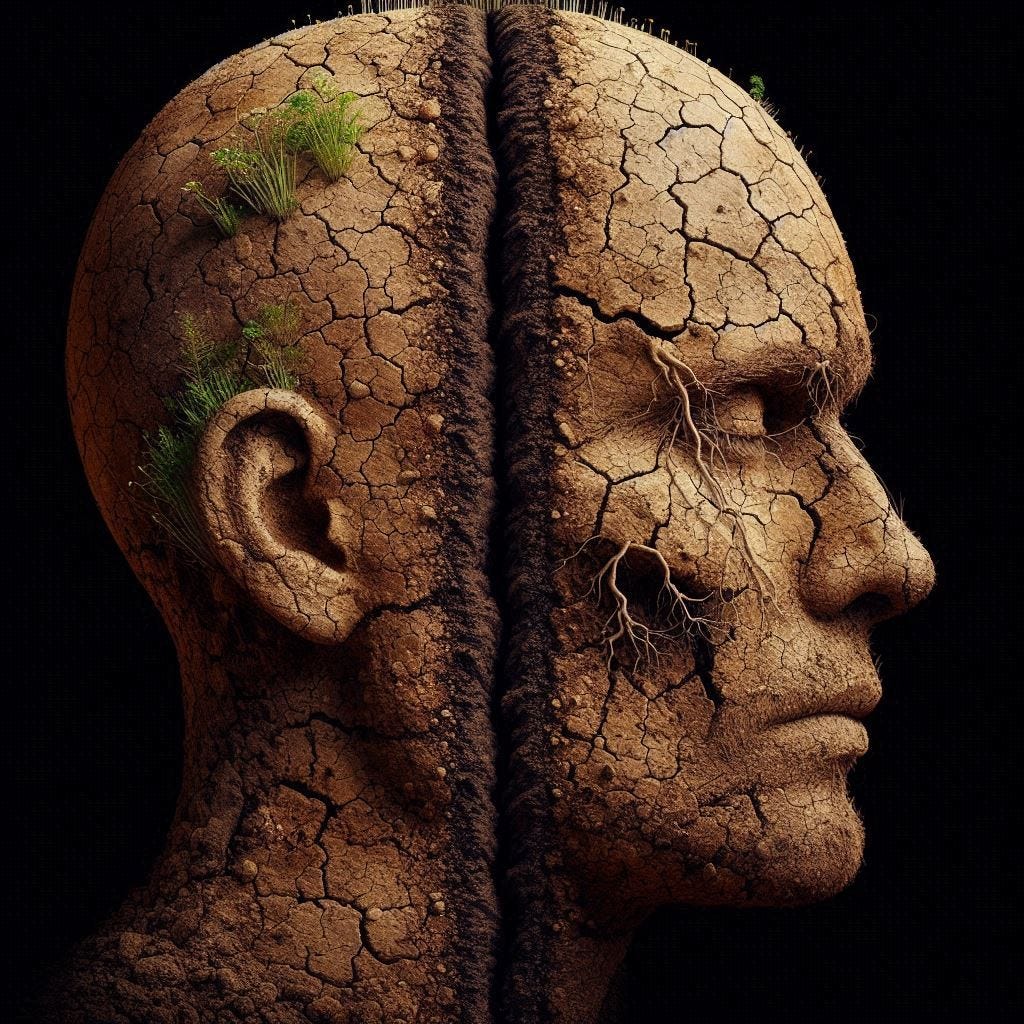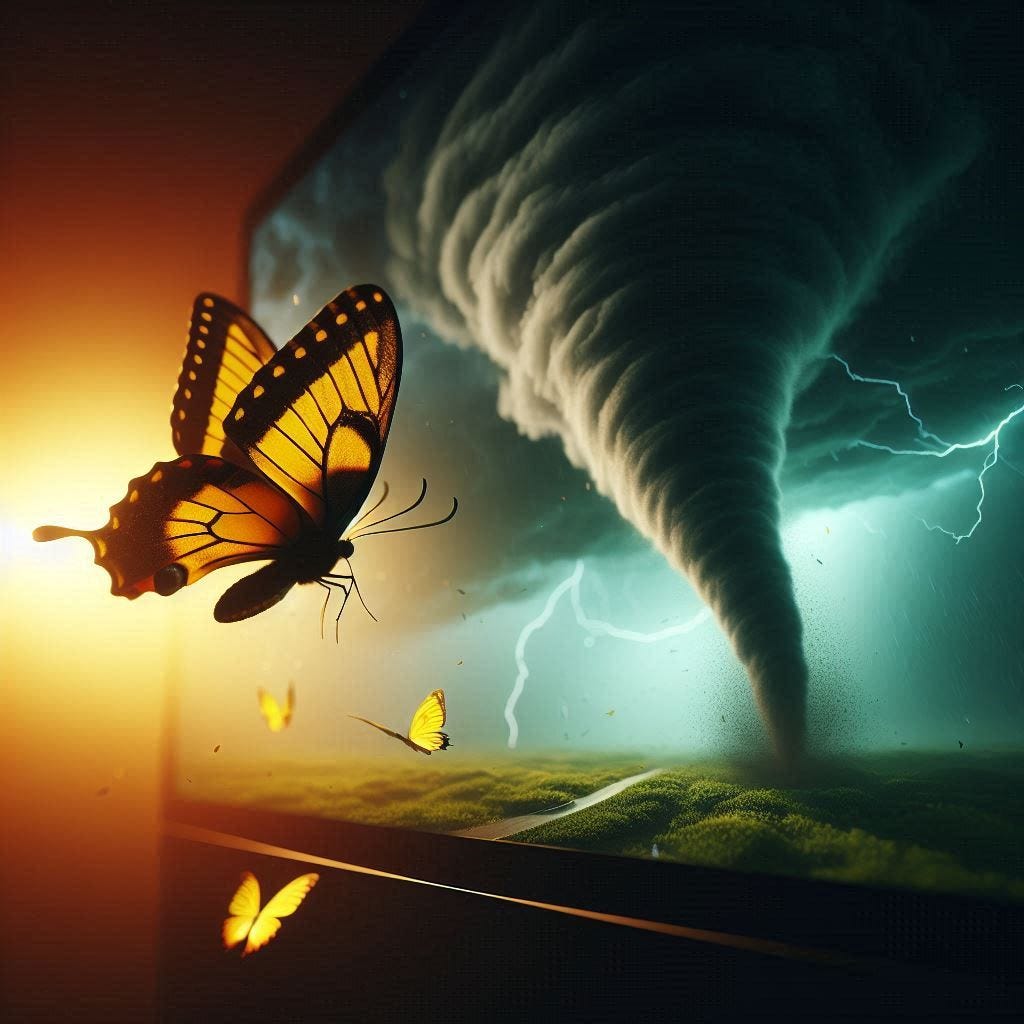Chaos Theory has always fascinated me because it completely overturns our view of the world. It teaches us that behind apparent disorder lies a subtle pattern of connections, a deeper and more mysterious order than we could have imagined. It's as if the universe plays hide-and-seek with us, concealing complex patterns beneath the veil of apparent randomness.
This theory does not speak of chaos as we commonly understand it - pure disorder and confusion. On the contrary, it shows us how systems that seem to behave randomly actually follow precise rules, even if invisible at first glance. Cause and effect intertwine in surprising and often unpredictable ways, yet governed by a hidden logic.
Pendulum
Observe the movement of a pendulum: ultimately, despite disturbances, it always returns to the same point - this is a simple attractor, a fixed point. Look at the water flowing in a river: it creates cyclically repeating vortexes - here is a cyclic attractor. But nature is more complex. In 1963, meteorologist Edward Lorenz discovered something extraordinary: there are "strange" attractors, patterns that are neither fixed points nor cycles, but infinite fractal forms that repeat at different scales. Chaos itself generates its hidden order.
Chaos theory has shown us that these attractors are everywhere: in weather, moving fluids, and biological systems. It's fascinating how even the slightest change in initial conditions can lead to completely different results - the famous butterfly effect. Yet, in all this apparent chaos, recognizable patterns emerge, as if the universe continues to draw the same forms, always different but strangely familiar.
10,000 years ago
Around 10,000 years ago, when our ancestors first cast a different gaze upon the land of the Fertile Crescent, something changed forever. The agricultural revolution was not just a new way of procuring food: it was the beginning of a new way of thinking, organizing, and dividing. Of drawing boundaries.
As I observe the furrow in my garden's earth, I think of that first moment when one of our ancestors traced a line in the ground. That seemingly simple gesture - separating "here" from "there" - was perhaps the first step toward the greatest revolution in human thought: the birth of dualism.
Like a strange attractor in chaos theory, dualistic thinking has exerted an irresistible force on human cognition, creating recurring patterns that converge toward recognisable structures despite their apparent randomness. That first furrow in the earth triggered a cognitive butterfly effect that still shapes our way of thinking today.
Separations
I imagine that first farmer, his stick tracing a boundary in the ground. He could not have known that this simple gesture would initiate a cascade of conceptual separations: mine/yours, inside/outside, friend/enemy, good/evil. Like iterations of a chaotic system, each new division generated further bifurcations, creating a complex geometry of thought that self-perpetuates and repeats at ever-different scales.
Dualism became our preferred strange attractor, a pattern constantly emerging in human cognition's chaos. Like Lorenz's attractor generating its characteristic butterfly wings, dualistic thinking creates binary structures that repeat in every field of human experience: in religion (sacred/profane), in philosophy (mind/body), in politics (right/left), even in technology (digital/analog, 0/1).
But there is a profound irony in all this. In attempting to order the chaos of reality through neat categorizations, we have created an even more chaotic system. Every dualism generates new contradictions, every category produces its edge cases, and every drawn boundary reveals its arbitrariness. Our attempt to dominate chaos through binary thinking has generated an even more complex meta-chaos.
Fractal
Yet, just as a strange attractor represents a hidden order in chaos, dualistic thinking has its fractal attitude - that property where the same pattern repeats at different scales, like in a fern leaf where every small part resembles the entire leaf. It has enabled the development of language, mathematics, and logic. It made science and technology possible. It structured our societies and cultures. It has been both limitation and possibility, both prison and key.
Today, as we observe the world through the lenses of complexity and chaos theory, we begin to see beyond dualism. We understand that reality is not made of sharp oppositions but of nuances, not of boundaries but of gradients, not of fixed categories but of dynamic systems in continuous evolution.
And…so?
The time has come to transcend this powerful strange attractor that has dominated human thought for millennia. How? Starting by placing ourselves as external observers to analyze our mind, which is continuously engaged in dualistic thinking. Not by denying it - that would be impossible and counterproductive - but by recognizing it as one tool among many, one way of thinking among many possible. As in chaos theory, where order and disorder are not opposites but complementary aspects of the same reality.
That first furrow in the earth reverberates through time, a wingbeat that generates storms of thought. Now we can begin to perceive the underlying unity beneath duality, the continuous behind the discrete, the infinite movement between order and chaos that characterizes both our thought and the universe itself.
It is a thought that fills me with wonder and hope. Like that first farmer who traced a boundary in the earth, we too trace new furrows in the terrain of human cognition. Not to divide, but to unite. Not to separate, but to connect. Not to simplify, but to embrace complexity in all its magnificent, mysterious beauty.
Feel free to leave a comment.
I have woven tales for anyone who cares to read them. My books await you on Google Books. Check also my stories on Medium.com.
I am eager to participate in research and produce content on Cross-Cultural Philosophy. Considering the many philosophy professors following Learn Vedanta Substack from universities across the five continents, I would be truly honoured to be involved in projects, as I have been recently approached. Please feel free to contact me.
I would be honoured if you considered subscribing to the Premium Contents of my Vedanta Substack and leaving feedback, comments, and suggestions on this page and by writing to me at cosmicdancerpodcast@gmail.com.
Visit my BuyMeACoffee page.
Thanks for reading.





